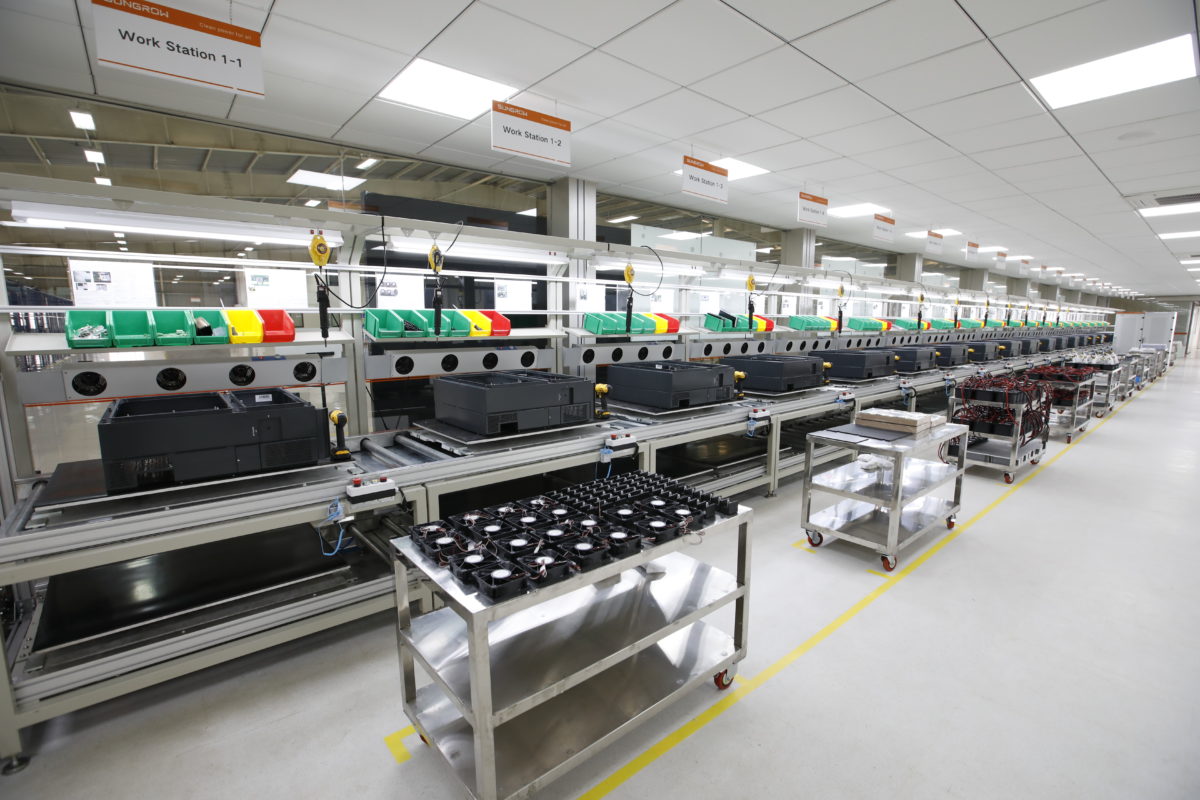To achieve India’s 100 GW by 2022 solar target using Make in India products, the government should prioritize establishing a full PV manufacturing value chain as a strategic industry.
A phased program could bring 15 GW of silicon-ingot-to-solar-module manufacturing capacity at competitive prices by 2024, according to sustainability thinktank The Energy and Resources Institute.
In a policy paper entitled Solar PV Manufacturing in India: Silicon Ingot & Wafer PV Cell-PV Module the institute has proposed an expansion of solar manufacturing in India in three stages: solar cells and modules; ingot/wafer and balance of system components; and plant and machinery equipment production.
Building capacity
The paper suggested India could target around 15 GW of cell and module production capacity over 2-3 years as a first step. To achieve that, a call for expressions of interests could be made to investors willing to develop fabs with a minimum 1 GW production capacity.
The government could consider the creation of solar manufacturing hubs along the same lines as its large scale solar parks, with the help of state governments to make the necessary land and infrastructure available. Each hub could be designed to accommodate 4-5 GW of solar PV manufacturing capacity along with ancillary industries.
A second stage of the thinktank’s proposed strategy – starting in the second year of the first phase – could see the nascent cell and module industry integrated with the production of silicon ingots and wafers. That would enable India to have the critical mass of a full value chain of manufacturing capability so its national solar program could continue regardless of economic and political shocks around the world.
Bids could be invited from investors prepared to back ingot and wafer making operations with production capacities of more than 5 GW, as well as from investors in balance of system manufacturing, the institute proposed.
With 10-20 GW of manufacturing capacity established, said the thinktank, the domestic PV value chain could be expanded to include plant and machinery for solar equipment manufacturing.
Significance
With a national goal of 100 GW of solar generation capacity by 2022, and of eventually supplying 40% of Indian electricity from clean energy sources, the creation of a domestic manufacturing base is of critical significance.
The nation currently imports almost 85% of the 10 GW of PV equipment it consumes annually, despite possessing almost 11 GW of domestic solar module production capacity and around 3 GW of cell output. Many of those facilities, however, sit idle as they are obsolete, sub-scale and uncompetitive with cheaper Far Eastern imports.
The Energy and Resources Institute policy paper took an overview of the global solar industry and compared the evolution of Indian PV manufacturing with that of China before coming up with its recommendations. The document was published under the Energy Transitions Commission India program.
PANEL DISCUSSION Made in India modules: setting up manufacturing locally
… at Quality Roundtable India 2019 @ REI, Wednesday 18 September, 12:00 – 13:30
Join us for practical guidance to ensure quality standards and supply international markets, as we address opportunities and challenges under current policy frameworks, tariff structures and subsidies.
This content is protected by copyright and may not be reused. If you want to cooperate with us and would like to reuse some of our content, please contact: editors@pv-magazine.com.









The “The Think Tank” in India is simply not… thinking enough and has to step out of it’s Comfort Zone to really address Pollution in India that kills 2+ Million every year due to this “Pollution menace”.
To eliminate this “Pollution Menace” and implement a ZERO POLLUTION OPTION… similar to The Green Deal in Europe, a target of 500GW barely touches the “tip of the Iceberg”.
At present, Govt. of India ” Energy Statistic 2019″ shows the Energy Supply/Consumption is 837,370/553,904 KToe or 9,784/6,443 TWhrs respectively.
As the Solar System, produces Electricity, there are no Fuel-Electricity Conversion Losses, and therefore it would be required to generate about 7,000 TWhr, including some T&D Losses…. today. (Remember…. 1TW of Solar Produces only about 1,200-1,500TWhrs/Yr only).
By 2050, Population Growth, Development, Demand, EV’s, etc.. would at least double the above consumption. This is… much much more than The “Think Tank” Option.
Unfortunately, by “underestimating” Demand by a Factor of 10 at least, the ability of Industry to meet the ZERO POLLUTION OPTION is being aborted … at birth itself!!!
The Think Tank needs to start Thinking “OUT OF THE BOX” if India has to reduce/eliminate those 2+Million Pre-Mature Deaths due to Pollution every year, & hundred million or more suffering from Lung, Heart, Cancer etc… diseases too…!!!.
India needs a 1 TW/yr Solar Panel Industry and not ~100GW/yr to achieve its “Green Deal”… by 2050 or so….!!!